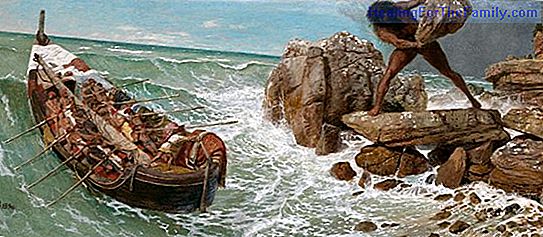Tropical fruits in the children's diet
Tropical fruits, although in Spain, are not too frequent, in other areas of the Spanish-speaking community, such as the Canary Islands or Central and South America, these fruits are part of the day to day diet in a child's diet. In this way, recommendations regarding the introduction of these with c
Tropical fruits, although in Spain, are not too frequent, in other areas of the Spanish-speaking community, such as the Canary Islands or Central and South America, these fruits are part of the day to day diet in a child's diet.
In this way, recommendations regarding the introduction of these with complementary feeding, or even their subsequent inclusion in the diet of children or adults, have a more cultural than scientific connotation. We explain everything you need to know about the introduction of tropical fruits in children's diet.
How and when to introduce tropical fruits into children's diet

As essential nutrients, tropical fruits contain a lot of vitamin C, considerable amounts of some B vitamins and copper. They are also very rich in fiber, especially mango and papaya. The mango is also rich in carotenoids, while the papaya is rich in folic acid, potassium and magnesium. Pineapple, on the other hand, provides significant amounts of manganese. Let's see what properties some tropical fruits have for the children's diet:
- Mango, has properties so attractive that it would be worthwhile to set aside popular traditions and prejudices towards the unknown and take advantage of them to introduce them as soon as possible into the diet of babies. Interestingly, the mango is a fruit that can be found fresh all year round, since, depending on where the tree is, the fruits may prefer the summer months or the winter in the tropics.
- The passionfruit or passion fruit is a very nutritious fruit, source of vitamin C and A, as well as iron and potassium. The combination of iron and vitamin C makes the iron in this fruit absorb more easily. In addition, it provides a large amount of fiber, favoring gastrointestinal transit.
- Guava is a source of vitamins and minerals with a profile similar to the rest of tropical fruits, in addition to containing a lot of fiber. El - Avocado
, on the other hand, is a very complete fruit, since it is a source of monounsaturated fat, a healthy fat that also facilitates the absorption of the fat-soluble vitamins it contains. It is not advisable to exceed your consumption (more than one a day), although, in moderation, it is a beneficial resource for children's diet, with a great variety of micro and macronutrients. The avocado in the form of guacamole, or simply crushed on a slice of bread, is a very nutritious snack for the kids of the house. El - The coconut sin, however, contains saturated fat, one of the least healthy in the diet, so its consumption is not recommended in the children's diet, despite its attractive content in B vitamins and minerals (copper, zinc, magnesium, manganese, iron, potassium and calcium).As a whole, these tropical fruits with high fiber content are highly satiating, which may not be recommended in the diet of children under 2 years old or of those who do not eat very well, however, some of them, such as guava , passion fruit and avocado, contain a high nutritional density, so they are particularly suitable in these cases.












